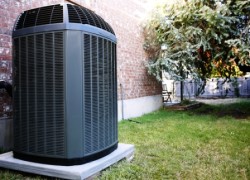Your New Heat Pump: Is Your Florida Home Ready for It?
If this is the season you get a new heat pump, you’ll want to take some time beforehand to prepare your home first. Heat pumps are the ideal HVAC appliance for our climate, since the winters are so mild. Factors that will impact a heat pump’s performance include its size, energy efficiency and installation.
Sizing
HVAC contractors use Manual J software to complete a load calculation that determines the proper size heat pump to cool your particular home. The inputs include:
- Cubic footage of the home
- Number, size and position of the windows and their efficiency
- Insulation in the roof and walls
- Air infiltration rates
- Layout of your home
- Heat-producing appliances indoors and types of lighting
- Household size and member ages
- Preferred indoor temperatures
- Landscaping factors
Contractors make such a thorough analysis because installing the wrong size for your home likely will leave you uncomfortable and with higher conditioning costs. A system that’s too large runs in brief spurts more often but seldom long enough to remove excessive humidity. Electric consumption is highest at start-up and it also causes the most wear and tear. A new heat pump that’s too small will struggle to cool your home on the hottest days.
Energy efficiency
The minimum energy efficiency for a new heat pump stands at 13 SEER (seasonal energy efficiency ratio). Considering the length of our cooling season, choosing a high-efficiency A/C (16 SEER or higher) makes the most sense. It will cost more initially, but you’ll have lower electric bills for years to come.
Installation
The outdoor condenser needs to be placed in a shady location where it has plenty of airspace around it. Limiting nearby vegetation also helps the condenser work more efficiently. The installing contractor also needs to verify that your ducts have sufficient capacity for the new system and thoroughly inspect to seal and secure them. Insufficient capacity and leaks will reduce the efficiency of the new heat pump.
If you’d like more information about preparing for a new heat pump, please contact us at NisAir Air Conditioning & Heating. We’ve provided exceptional HVAC services for Martin, Palm Beach and Indian River counties since 1973.

